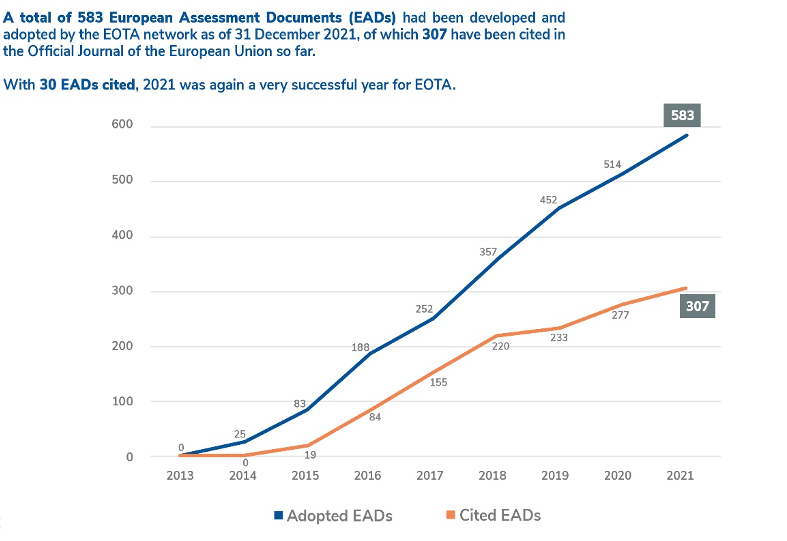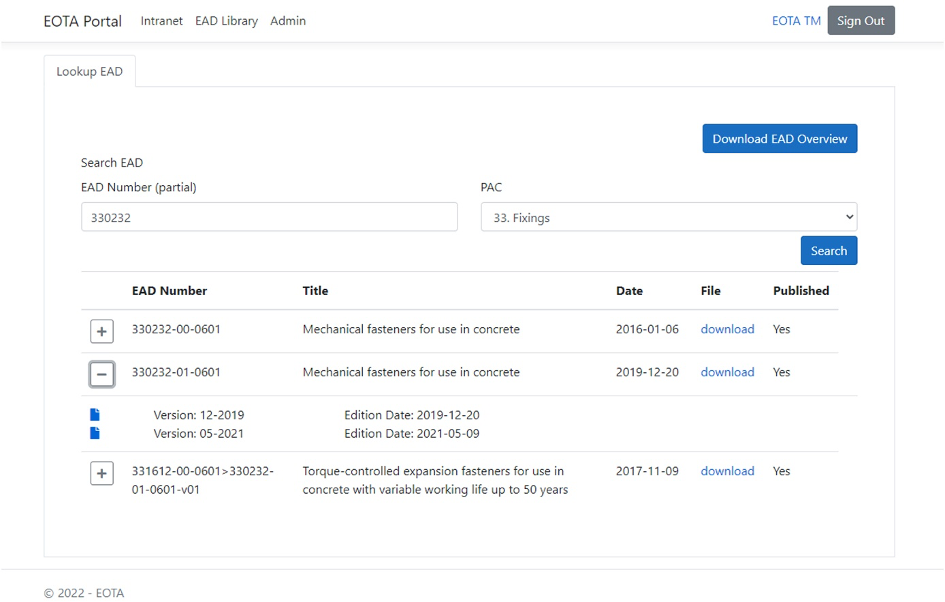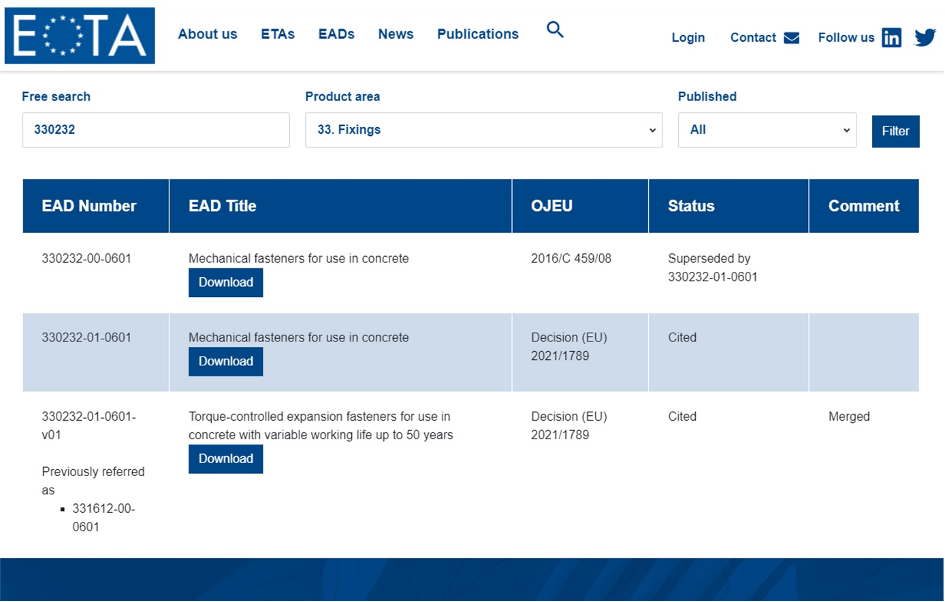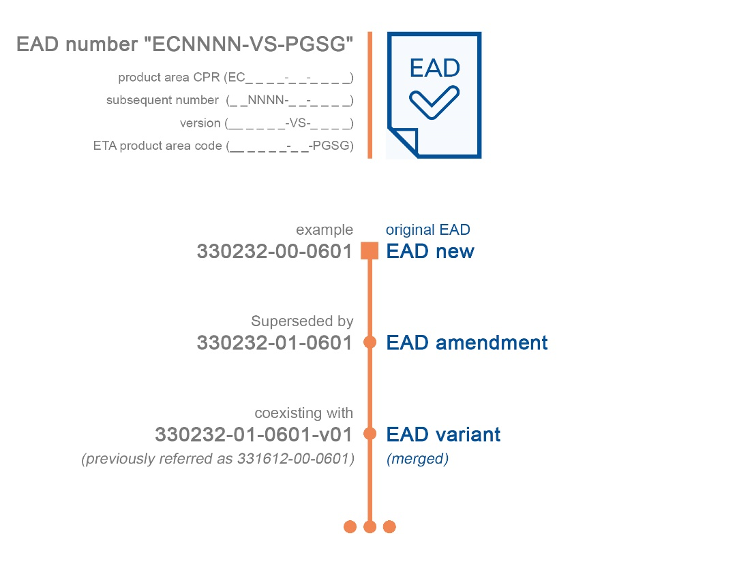by Carlos Sanchez, Project Manager at EOTA
European Assessment Documents (EADs) originated from the change in the legal framework for the construction sector in Europe in 2013. In this process, the European Technical Assessment procedure (ETA route) for the voluntary assessment of non-standard construction products was transformed, and so were the harmonised assessment documents developed by EOTA, that now counted amongst the rank of harmonised technical specifications set out in the Construction Products Regulation.
The present article intends to shed some light on the transformation of this work environment and how EOTA has restructured the technical management of EADs over the last years – which has been my core role as Project Manager for the Organisation – with the objective of ensuring transparency, consistency as well as document integrity, availability and respect of confidentiality standards.
As the construction sector was well aware of the benefits that the voluntary technical assessment offered, the development of European Assessment Documents, as the new basis for ETAs, bloomed. In the last seven years, over 320 EADs were published in the Official Journal of the European Union (OJEU) and more than 1000 ETA requests leading to EAD development work have been registered, demonstrating the innovative drive of the market.

While following the ETA route is worthwhile for manufacturers, developing an EAD is not an easy assignment. The challenge consists in developing a European Assessment Document that meets industry demands, is technically state of the art, is apt to respond to existing requirements for a safe built environment in different EU countries and meets the legal and formal requirements of a harmonised technical specification – and this in a vibrant and constantly changing environment. Four groups of agents cooperate to respond to this challenge: the manufacturer(s), the experts working in the European Technical Assessment Body of the manufacturer's choice, the competent EOTA Working Group as a whole, and the European Commission services.
In this context, the role of the EOTA Secretariat is to manage the EAD projects from start to publication. For the last 7 years, we have been committed – and will continue to be – to facilitating the follow-up of EAD projects, mediating in the communications between the agents involved, finding unbureaucratic and pragmatic solutions for special cases, and finally keeping the administrative workload that comes with the EAD development slim and efficient.
EOTA's primary focus is on strengthening and upholding the quality characteristics which have built the EADs' excellent reputation. The reliability of EADs is key to all construction industry stakeholders. We therefore pay attention to the fulfilment of all requirements set out in the CPR, but also to appropriately addressing the specific technical concerns in each individual case, without compromising the general consistency of assessments for construction products across Europe.
Along with the increasing diversity of practical cases and experiences, the complexity of the EAD development process has increased through the years. At EOTA, we created new tools and procedures (some of them outlined below) to answer to the needs of a living market. Appropriately classifying and monitoring EAD projects, which continue to evolve even after publication, has become paramount to ensure the EADs can be processed competently and smoothly.
Currently, EOTA distinguishes four main types of EADs: new EADs, amendments, variants, and finally EADs resulting from the conversion of former ETAGs.
Amidst these types, EAD amendments have come to play an increasingly important role for the industry. EAD updates become necessary when technical advances create a need to include additional performance characteristics for a product already covered by an existing EAD. In 2016, the first EAD amendments were published in the OJEU, their number has grown steadily ever since. This fact proves the relevance of EADs, not only for expanding the range of innovative products covered, but also to mirror and support the permanent development of ETA products and their performances, which requires an agile update and upgrade of the underlying assessment methods.
The most recently created EAD type is the variant, which is still a new concept to many industry stakeholders. A variant of an EAD is a reduced document created for specific technical addition(s) to an existing EAD, coexisting with the original EAD and not replacing or superseding it. At present, the conditions for developing an EAD variant are limited to EADs 'in high demand' in the market, the conditions for which are defined by the European Commission. In 2021, the first EAD variant has been published in the OJEU, namely EAD 330232-01-0601-v01, a document oriented toward extending the working life of torque-controlled fasteners for use in concrete. As it happened with amendments, EOTA expects this type of EAD to enjoy a growing popularity in the next couple of years, because it adds a level of modularity to the ETA framework which has long been called for by the industry.


Typology questions aside, further aspects have added a layer of complexity to the EAD management process. One case in point is the concept of ‘merging’ EADs, a practice that comes into play when similar EADs under development are combined into one single final document before citation. There are also cases where EAD versions are superseded before they have been published in the OJEU which has an impact on the ETAs already issued that needs to be properly taken into account in their management. And last but not least, there is the key aspect of protecting manufacturers' trade and business secrets that EOTA is bound to ensure when it comes to ETA requests from individual manufacturers. This circumstance often makes it necessary to handle technically related or overlapping ETA requests separately from each other and with strict confidentiality.

Bearing all the EAD development options as well as the applicable boundaries in mind, our team at the EOTA Secretariat is devoted to finding the most beneficial solution for the construction industry stakeholders. One of our main goals is to gear our broad experience in managing EAD projects toward facilitating citation in the OJEU. The meticulous monitoring performed in EOTA and the cooperation with the European Commission services have proven to be successful in keeping publication of EADs active over the past years.
While the active use of the ETA route may bring some new challenges to the table from a management perspective, it mainly underlines the relevance of a reliable, flexible and customisable product assessment route for the European construction sector.